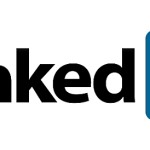If you better understood the misconceptions regarding mirroring your prospect or client, how to identify successful advisors from posers, and the meaning of six different styles of handshakes, would that help you improve your sales performance?
Bill Acheson is an expert in nonverbal communication. As a faculty member at the University of Pittsburgh for over 20 years and as a professional speaker since 1994, he has spoken to thousands of people across the United States about how to use body language to communicate more effectively.
Book Bill for your next event through Wholesaler Masterminds Speakers Bureau.
The Power of Nonverbal Communication
Part 1. Mirroring The Prospect or Client
If you were taught one thing in Salesmanship 101, it was probably this – ‘Mirror the prospect or client and you’ll have instant rapport.’
It sounds great, BUT IT DOESN’T WORK!
How many times have you stepped into a corner office and met with someone who is leaning back in his chair with his elbow high and his fingers locked behind his head? Would you mirror him?
What about the person who acts like you are an intruder? This person sits on the edge of her seat glancing at her watch looking for a chance to dismiss you gracefully. Would you mirror her?
In the academic world, we refer to mirroring as isopraxis. It occurs naturally when two people are in agreement. It’s an indicator of good communication.
And it would work if every person you met exhibited positive listening behavior. But they don’t. In one academic study, mirroring actively worked against the sales professional over 60% of the time.
The best approach in meeting prospects and clients is to adopt a positive, assertive posture that says, “I’m open to hearing your message.”
There are six things you can do to project both confidence and competence:
- Use a high level of eye contact: If you hold eye contact about 70% of the time you show interest without intimidation.
- Smile often: Not only does it suggest confidence, it says you are approachable. Use it when presenting positive information about your product and services.
- Head nod strategically: While listening, it implies acceptance. While speaking, head nodding should accompany information that may have negative connotations for the listener. It indicates concern on the part of the speaker.
- Sit erect with a slight forward lean: Sitting with a backward lean suggests arrogance; sitting with a pronounced forward lean indicates eagerness. Sitting erect with a slight forward lean indicates attentiveness and connection.
- Keep your hands in full view at all times: Hand concealment suggests a hidden agenda or untrustworthiness. Keeping your hands on the arms of your chair or on the table or desk in front of you shows confidence.
- Keep your feet flat on the floor: It shows both openness and confidence. Crossing your legs is a defense mechanism you subconsciously use to feel safe.
If you use these six behaviors in every meeting with a prospect or client you will always be seen as open and approachable. In fact, these are the behaviors your prospect is likely to exhibit if you are successful in your sales presentation.
Isopraxis works! But most people have it backwards. The ideal situation occurs when the prospect or client mirrors you.
If a prospect covers his stomach with his arms and legs crossed, he is in a highly defensive posture. By contrast, if he sits with his arms and legs open, he is also open to your message and giving fair consideration to what you have to say. Remember, if you can’t get them to open, don’t expect to close.
Part 2. Identifying High Net Worth
You can’t necessarily identify high net worth by appearance, but a cluster of behaviors will give them away whether they are in a suit or in jeans. I look for four things from a seated male:
- ‘Relaxed Muscle Tone’ projects the absence of fear.
- ‘Pronounced Backwards Lean’ indicates emotional disengagement.
- ‘Expansiveness’ signals control and lack of defensiveness.
- ‘Body Asymmetry’ shows the absence of immediate threat.
For women, I look for two inverse relationships related to appearance. Hair and net worth tend to be inversely related. Long hair is about attractiveness; short hair is about accomplishment. Jewelry and net worth also tend to be inversely related. Understatement is the key to projecting high social status and high net worth.
Part 3. Interpreting Handshakes
All handshakes are about personal power. There should be no gender distinctions in a handshake. When you meet for the first time, approaching with a neutral handshake allows you the chance to gather some subtle information about the person you are meeting.
There are six general styles of handshake:
- The Cooperator: A one handed vertical handshake with medium muscle tension says you are perceived as equals.
- The Dominator: A downward turned palm signals that the person you are meeting feels he has the upper hand.
- The Submissive: An upward turned palm suggests the other person feels insecure or is lower in social status.
- The Bone-crusher: A handshake that is decidedly too strong suggests power to some, but more likely signals that person is compensating for some perceived inadequacy.
- The Dismissive: A limp-wristed handshake accompanied by broken eye contact is this ego-based individuals’ suggestion that you are insignificant. It does suggest substantial high net worth and social status.
- The Politicians Handshake: A two-handed handshake in a selling situation is perceived as a false attempt to accelerate rapport. It should be avoided unless you are meeting a very obvious senior citizen where it indicates respect or a person with whom you have a long running professional relationship where it shows appreciation.
Nonverbal communication in a first meeting is considered far more powerful than what you say.
The unspoken messages we transmit everyday may be processed subconsciously, but they are critical points that influence our decision-making.
written by Bill Acheson


 Creating an Influential Advisor Encounter with Michael Hoffman
Creating an Influential Advisor Encounter with Michael Hoffman Fess Up Wholesalers, Better LinkedIn Useage Belongs In Your Practice’s Toolbox with Laura Virili
Fess Up Wholesalers, Better LinkedIn Useage Belongs In Your Practice’s Toolbox with Laura Virili Success At What Cost? with Angela Gaffney
Success At What Cost? with Angela Gaffney Never Let Them See You Sweat with Marc Vahanian
Never Let Them See You Sweat with Marc Vahanian Five Star Service and Attention to Detail: The Benefits to Your Practice with Bruce Himelstein
Five Star Service and Attention to Detail: The Benefits to Your Practice with Bruce Himelstein
Jay Jones says
Good article. Interesting observations on the hand shakes. Don’t totally agree with the mirroring element as it has worked very, very well for me in the past. Common sense will dictate much of the mirroring one can and could use. Obviously hands behind the head leaning back in ones chair isn’t appropriate but many other aspects are. Don’t believe it doesn’t work.